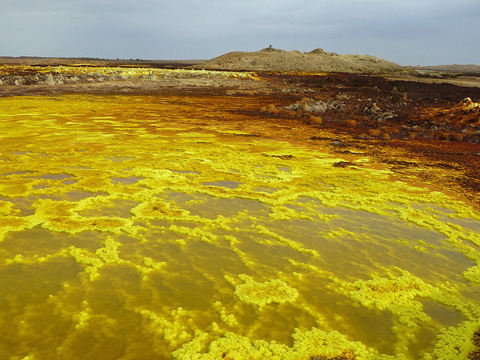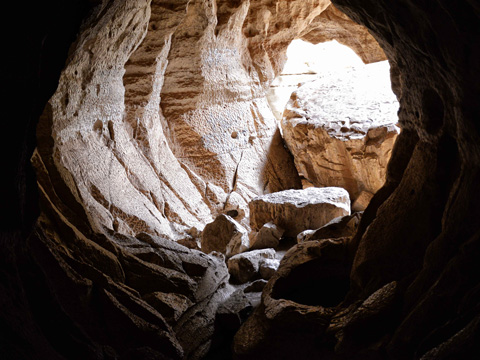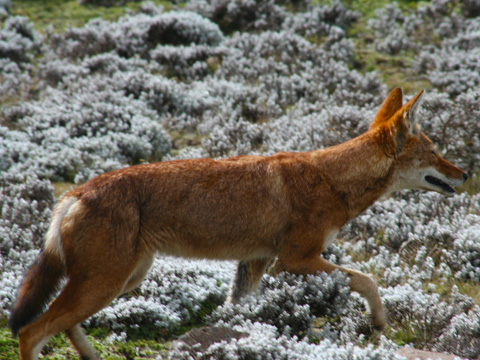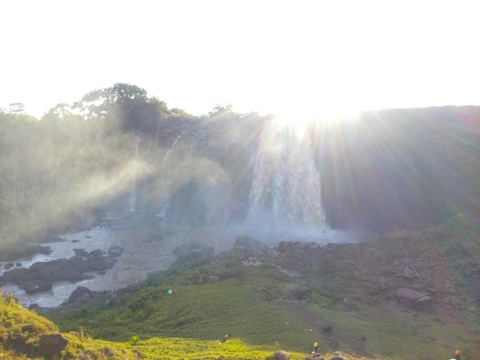Natural Attractions
Simien Mountains
The Semien Mountains located in northern Ethiopia, north east of Gondar, are part of the Ethiopian Highlands. They are a World Heritage Site and include the Semien Mountains National Park. The mountains consist of plateaux separated by valleys and rising to pinnacles. The tallest peak is Ras Dashen (4,550 m); other notable heights include Mounts Biuat (4,437 m) and Kidis Yared (4,453 m).
Because of their geological origins the mountains are almost unique, with only South Africa’s Drakensberg having been formed in the same manner and thus appearing similar. Notable animals in the mountains include the walia ibex, gelada, and caracal and a Ethiopian wolves.
Erta Ale and Dallol Depression
Erta Ale means “smoking mountain” in the local Afar language and its southern most pit is known locally as “the gateway to Hell”.
Erta Ale is centered over the East African Rift system, which is a triple junction setting whose movements are resulting in the formation of a pull-apart basin or rift. The volcano comprises mainly Mafic material which has been brought up to the surface caused by unroofing of the mantle due to this rift formation.
The Danakil Depression is the northern part of the Afar Triangle or Afar Depression, a geological depression that has resulted from the presence of three tectonic plates in the Horn of Africa. The Danakil Depression is located in the Afar Region near the border with Eritrea and Ethiopia. This area is referred to as the cradle of hominids after the famous Lucy Australopithecus fossil was found there, which has been dated 3.2 million years old.
The Danakil Depression is the hottest place on Earth in terms of year-round average temperatures. It is also one of the lowest places on the planet (100 m below sea level), and without rain for most of the year. Here, the Awash River dries up in a chain of salt lakes never reaching the Indian Ocean.
Sof Omar Caves
Sof Omar Cave is the longest cave in Ethiopia at 15.1 kilometres (9.4 mi) long; sources claim it is the longest system of caves in Africa. It is situated to the east of Robe, in the Bale Zone of the Oromia Region in southeastern Ethiopia, through which the Weyib River (Gestro River) flows. It sinks at the Ayiew Maco entrance and reappears at the Holuca resurgence 1 kilometre (0.62 mi) away.
According to tradition Sof Omar was the name of a Muslim holy man who lived in the area and Ayiew the name of his daughter. Maco and Holuca are local names for ‘name’ and ‘cave’, respectively. Long a religious centre, it is sacred both to Islam and the local traditional religion. The caves are known for their many pillars, particularly in the ‘Chamber of Columns’.
Bale Mountains
The Bale Mountains are located in the southeast Ethiopia, south of the Awash River, and are part of the Ethiopian Highlands. They include Tullu Demtu, the second-highest mountain in Ethiopia (4377 meters), and Mount Batu (4307 meters). The Bale Mountains National Park covers 2,200 square kilometers of these mountains. The main attractions of the park are the wild alpine scenery, and the relative ease with which visitors can see unique birds and mammals.
The Bale Mountains are home to many of Ethiopia’s endemic animals, notably the Ethiopian wolf (Canis simensis), found on the Sanetti Plateau. The park also contains the Harenna Forest, situated to the south of the mountains, which is a largely unexplored area thought to contain many undiscovered species of reptile as well as lions, leopards and various types of antelope. Besides wildlife, the National Park offers trekking opportunities from the park headquarters at Dinsho.
The largest group of Ethiopian wolves is found here. Other characteristic large mammals are mountain nyalas, Menelik’s bushbucks, warthogs, and bohor reedbucks.
The Blue Nile Falls, Lake Tana and ’tis-esat’
The Blue Nile Falls is a waterfall on the Blue Nile river in Ethiopia. It is known as Tis Abay in Amharic, meaning “smoking water”. It is situated on the upper course of the river, about 30 km downstream from the town of Bahir Dar and Lake Tana. The falls are considered one of Ethiopia’s best known tourist attractions.
The falls are estimated to be between 37 and 45 metres high, consisting of four streams that originally varied from a trickle in the dry season to over 400 metres wide in the rainy season. Regulation of Lake Tana now reduces the variation somewhat, and since 2003 a hydro-electric station has taken much of the flow out of the falls except during the rainy season. The Blue Nile Falls isolate the ecology of Lake Tana from the ecology of the rest of the Nile, and this isolation has played a role in the evolution of the endemic fauna of the lake.
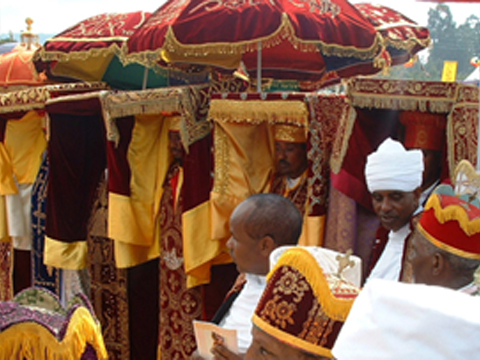
Festivals in Ethiopia
Ethiopia still retains the Julian calendar, in which the year…….
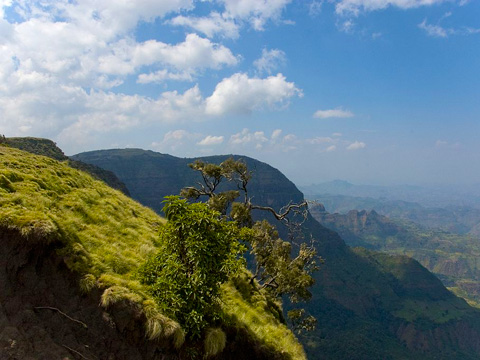
National Parks
Simien Mountains National Park is one of the national parks of Ethiopia…..

Historical Attractions
Lalibela is a town in northern Ethiopia famous for monolithic rock……

Cultural Attractions
The Dorze are a small ethnic group inhabiting the Gamo Gofa Zone …..

